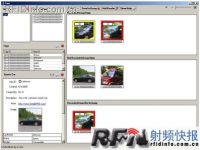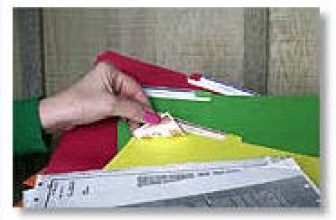
“NOX” RFID system helps industry security cut off theft
[ad_1]
The NOX system includes RFID readers embedded in walls, surveillance video recorders, and phosphors used in some cases, which can be used to track the movement of people and assets. This system was developed by SimplyRFID, a company located in the Warrenton area.
The company was founded by Carl Brown in 2002 and mainly provides RFID solutions to customers including Stamps, UPS, FedEx, the United States Postal Service and Target. Its Pro-Tags product line is mainly supplied to DOD of the US Department of Defense. Brown said that in the past few years, the company has entered the monitor market, catering to the government’s need to use RFID to catch thieves and track people around. NOX tags are passive long-distance RFID tags, each priced at 20 cents.
Because of its proximity to Washington, DC, SimplyRFID has naturally attracted the attention of many government agencies such as the FBI. Among them, the FBI had bought RFID readers and tags from the company, but they brought the hardware back and installed them on their own. “We found that as long as it is a technology that can help safety, they are happy to use it,” Brown said. So next, the company began to develop more comprehensive security solutions, including RFID readers that can be video-monitored and phosphors that can be tracked by cameras.

NOX system for vehicle monitoring 
NOX system management software
The NOX system developed by SimplyRFID mainly integrates two major functions-a reader that can be embedded in the wall and a surveillance video recorder that can be hidden at the request of users to track theft. Using these two functions, Brown said, users can both know what assets are missing and how they are missing.
“The biggest problem encountered in selling RFID readers is that they cannot be sold separately, because RFID readers alone are not a good security solution,” Brown said. RFID is only part of the security solution, helping users track the movement of assets without the need for manpower to guard them all day. However, Brown said that once combined with video surveillance, users will be fully aware of asset movements and theft activities.
Brown compares RFID technology to a fence, which has many flaws, because people can always find a way to enter around the fence. As far as RFID technology is concerned, people may not wear RFID badges, they can bring other people’s badges or simply use RFID stickers to get through. Therefore, in addition to the use of RFID technology, surveillance video recorders and phosphors are also very important security measures. Among them, the phosphor contains microporous fibers, which emit red light when exposed to low-energy lasers, which is invisible to human eyes but detected by video cameras. Dust is mainly scattered in accident-prone areas or prohibited entrances.
When someone walks through an unauthorized area, they may accidentally stick phosphors. At this time, the video recorder detects the red light emitted by the dust and sends an alarm. Brown said that this system can provide all-round security against burglars or beasts breaking into the protected zone.
Currently, SimplyRFID has begun supplying this system to the private sector, with customers in California, Texas, and Florida. They mainly use this system to track employees and a large number of high-value assets that are easy to disappear.
Brown said that the thief’s usual trick is to install special items such as televisions and computers on the car or take the stolen assets to the waste collection point, and then transfer them away by another group. Sometimes the theft is quite abominable, and the goods and assets of some merchants’ entire vehicles are missing. However, most businesses are reluctant to complain and just want to prevent theft from happening. “They just want to find the perpetrators and stop them from stealing,” Brown said.
By sticking labels on items, personnel badges or trash cans, businesses can track which goods have moved and where they have moved. The video recorder can record the entire process as evidence. If the goods are transported away without receiving orders or an employee frequently makes such actions, the company will use this video recorder to observe the specific situation.
Brown said, SimplyRFID mainly uses RFID readers provided by vendors such as Thing Magic and Motorola. The reader is usually installed on the wall at night or during unattended hours, and connected to the Dell computer server with an Ethernet cable, so that the company’s security staff can view the relevant data.
Under normal circumstances, the company will install 4 or 5 secret readers and the same number of video recorders where the goods are missing. In other cases, RFID readers will be installed at the door and warehouse, and each incoming goods will be tagged. For those users who used the NOX system in 2007, Brown said, “3 of them have fully used the system, and the other 7 are still in the pilot phase. On average, we will add one more user to install this system every week.”
The company uses an RFID reader to obtain the ID number and transfer the data to a Dell computer server that can manage 100 readers. NOX software then integrates the RFID tag data with the video stored in the server, so that the time and location of each RFID tag reading, the name and ID number of the asset and employee will be automatically displayed on the computer screen.
Brown said that most of the cameras are provided by Axis Communications, and the NOX system uses EPC Gen 2 UHF tags produced by Avery Dennison.
The total cost of using the NOX system including 4 or 5 readers, cameras and software is approximately US$40,000. If you want to use a NOX system with 30 antennas and 15 cameras, Brown said the average cost will be between US$100,000 and US$150,000. Brown said, SimplyRFID also provides installation services, but for some installation customers usually choose to install themselves, such as connecting cables to readers, cameras and servers. Some other end users, including government agencies, install them entirely by themselves.
[ad_2]



